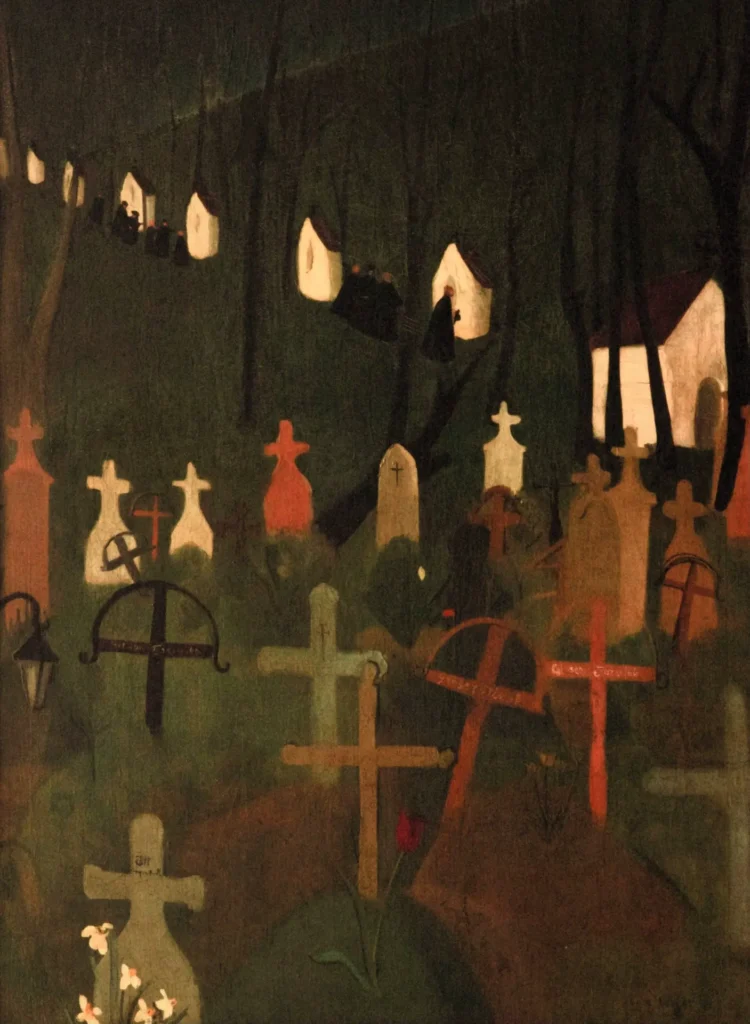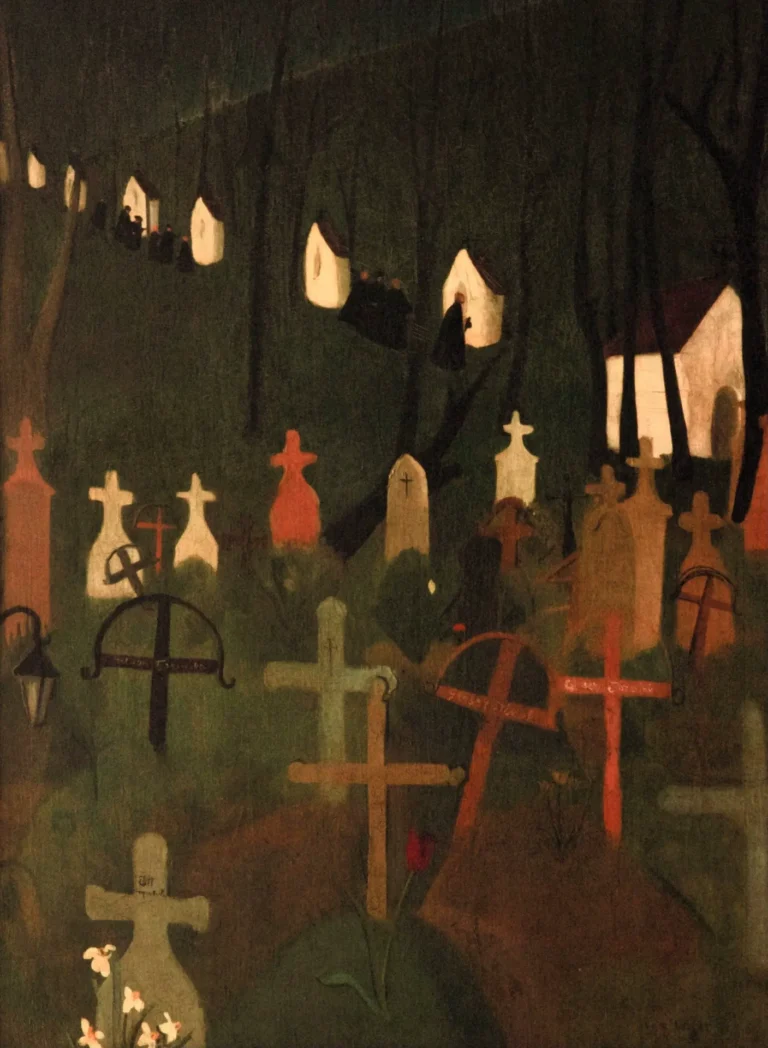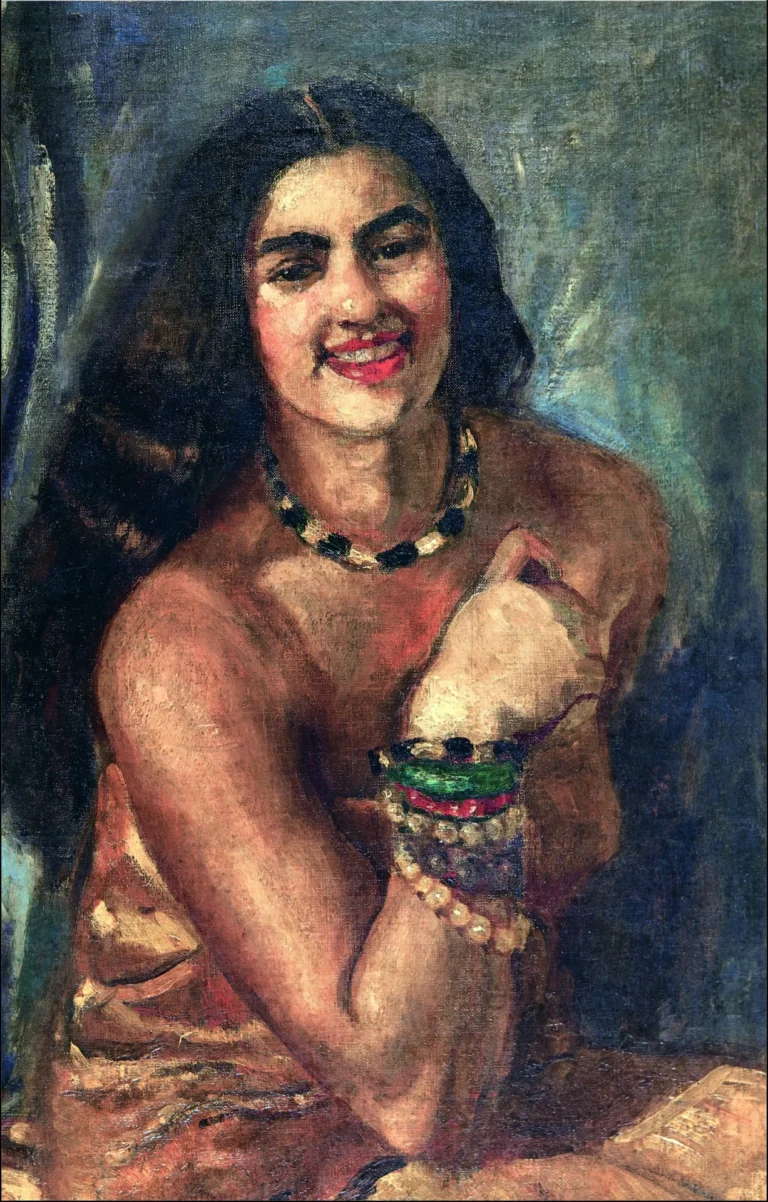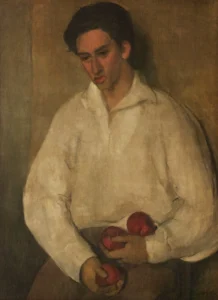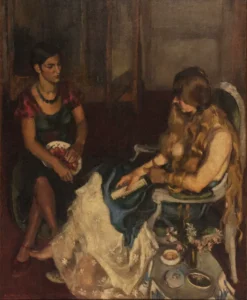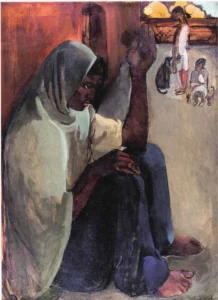The Merry Cemetry (1939)
Created in 1939, 'The Merry Cemetery' is a compelling oil painting by renowned artist Amrita Sher-Gil. This work is rich in symbolism and artistic influences, portraying a somber scene with Stations of the Cross, tall bare trees, and elements reflecting both personal and universal themes of suffering and renewal. Sher-Gil's mastery of chiaroscuro and expressionistic brushwork showcases her unique blend of European and Indian traditions, emphasizing her deep psychological state during a transformative phase of her life. This painting is an essential document of her artistic journey and stands as a significant piece in the collection of the National Gallery of Modern Art in New Delhi.
Year 1939
About the Artwork
Amrita Sher-Gil created 'The Merry Cemetery' during a reflective period while residing in Hungary with her husband, who was serving his military duty. This time was marked by a prolific creative output, as she transformed her experiences and surroundings into her art. The stark imagery and somber symbols in the painting demonstrate a grappling with themes of mortality and existential contemplation. The towering bare trees are not just a backdrop, but significant reflections of her inner turmoil and experiences, evoking a sense of universal suffering akin to the trials faced by Jesus. Combining influences from her European training and her Indian heritage, Sher-Gil’s style in this piece is a testament to her artistic maturity and emotional depth, maintaining a dialogue with cultural and personal narrative.
Did You Know
A descendant of both Indian and Hungarian roots, Amrita Sher-Gil’s diverse cultural background deeply influenced her artistic perspectives, blending Eastern and Western aesthetics in her works.
The Nagybánya School, known for its plein air painting and vibrant colors, encouraged Sher-Gil to explore a more expressive and personal style, evident in ‘The Merry Cemetery’.
Amrita Sher-Gil is often referred to as one of the pioneers of modern Indian art, and her works continue to inspire artists and art enthusiasts, bridging the gap between traditional and contemporary art.




